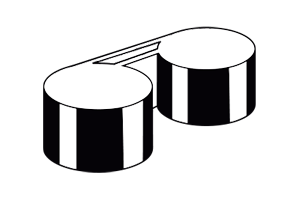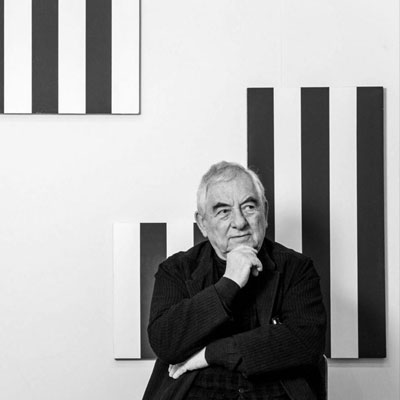
25/03/1938
Daniel Buren, born in 1938 in Boulogne-Billancourt, France, is an internationally renowned contemporary artist. He is famous for his works featuring alternating vertical stripes, each 8.7 cm wide, which have become his artistic signature. Buren quickly established himself as a major figure in contemporary art due to his conceptual approach and unique use of public space.
He began his career in the 1960s, rapidly adopting his distinctive striped motif. These stripes, often white and colored, are used to challenge the perception of space and the interaction between the artwork and its environment. Buren refers to this concept as “work in situ,” emphasizing the importance of the spatial context of each installation.
One of his most famous works is “Les Deux Plateaux” (1986), also known as “Buren’s Columns,” located in the Cour d’Honneur of the Palais-Royal in Paris. This installation, composed of striped marble columns of varying heights, sparked strong reactions and marked a turning point in public art in France.
In addition to his permanent installations, Buren has created numerous temporary interventions in diverse spaces such as museums, parks, and historical buildings. His work often explores themes of architecture, light, and perspective, transforming ordinary places into visual and interactive experiences.
Buren has also participated in many international exhibitions, including the Venice Biennale and Documenta in Kassel. His radical approach and rejection of traditional art conventions have influenced generations of contemporary artists.
